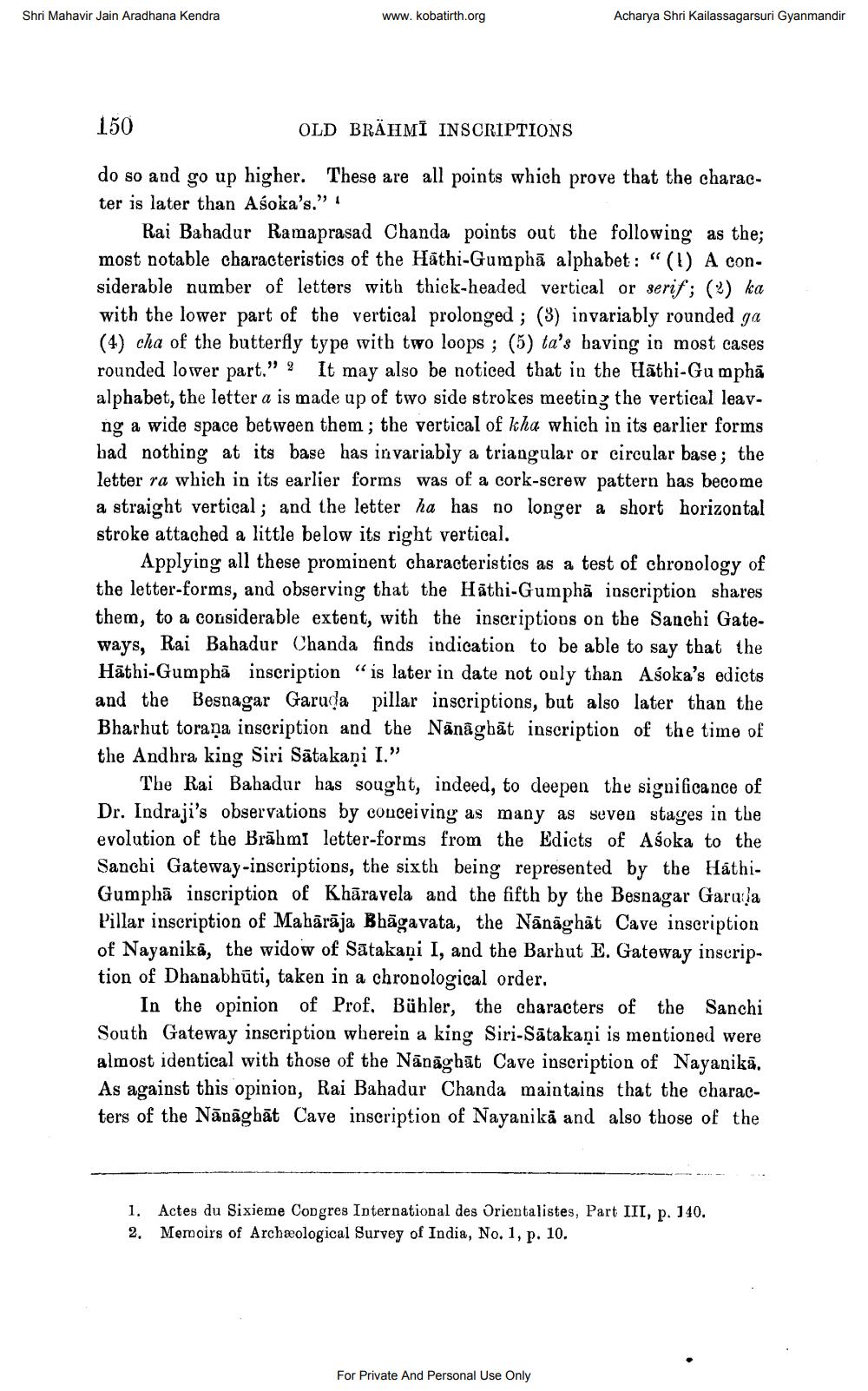________________
Shri Mahavir Jain Aradhana Kendra
www.kobatirth.org
Acharya Shri Kailassagarsuri Gyanmandir
150
OLD BRAHMI INSCRIPTIONS
1.
do so and go up higher. These are all points which prove that the character is later than Asoka's."
Rai Bahadur Ramaprasad Chanda points out the following as the; most notable characteristics of the Hathi-Gumphā alphabet: “(1) A considerable number of letters with thick-headed vertical or serif; (%) ka with the lower part of the vertical prolonged ; (3) invariably rounded ga (4) cha of the butterfly type with two loops ; (5) ta's baving in most cases rounded lower part.” 2 It may also be noticed that in the Hāthi-Gumpha alphabet, the letter a is made up of two side strokes meeting the vertical leavng a wide space between them; the vertical of kha which in its earlier forms had nothing at its base has invariabìy a triangular or circular base; the letter ra which in its earlier forms was of a cork-screw pattern has become a straight vertical; and the letter ha has no longer a short horizontal stroke attached a little below its right vertical.
Applying all these prominent characteristics as a test of chronology of the letter-forms, and observing that the Hāthi-Gumphā inscription shares them, to a considerable extent, with the inscriptions on the Sanchi Gateways, Rai Bahadur Chanda finds indication to be able to say that the Hāthi-Gumphā inscription “is later in date not only than Asoka's edicts and the Besnagar Garuda pillar inscriptions, but also later than the Bharhut torana inscription and the Nânâgbāt inscription of the time of the Andhra king Siri Sātakani I.”
The Rai Bahadur has sought, indeed, to deepen the significance of Dr. Indraji's observations by conceiving as many as seven stages in the evolution of the Brāhmi letter-forms from the Edicts of Asoka to the Sanchi Gateway-inscriptions, the sixth being represented by the HathiGumphā inscription of Khāravela and the fifth by the Besnagar Garuda Pillar inscription of Mahārāja Bhagavata, the Nānäghãt Cave inscription of Nayanikā, the widow of Satakaņi I, and the Barhut E. Gateway inscription of Dhanabhūti, taken in a chronological order.
In the opinion of Prof. Bühler, the characters of the Sanchi South Gateway inscription wherein a king Siri-Sātakani is mentioned were almost identical with those of the Nānāghāt Cave inscription of Nayanikā. As against this opinion, Rai Bahadur Chanda maintains that the characters of the Nānāgbāt Cave inscription of Nayanika and also those of the
T.
1. Actes du Sixieme Congres International des Orientalistes, Part III, p. 140. 2. Memoirs of Archeological Survey of India, No. 1, p. 10.
For Private And Personal Use Only




